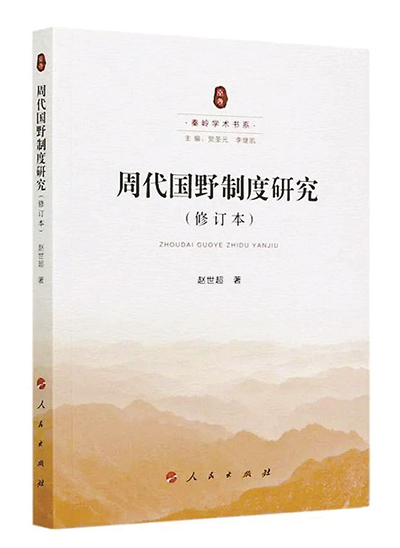State formation and development in early China

Research on the Guo-ye System in the Zhou Dynasty
Research on the Guo-ye System in the Zhou Dynasty, written by Zhao Shichao, a professor from the School of History and Civilization at Shaanxi Normal University, believes that the Guo-ye System is the external form of early states in China represented by the Western Zhou Dynasty (c. 11th century–771 BCE), while the Fu System, or the Designated Servitude System, is the core content that can better reflect the nature of states.
“Guo” refers to a few advanced centers, while “ye” refers to the vast area outside of guo. The two sides are in a point-plane relationship. The so-called Western Zhou Dynasty was only a loose political union surrounded and protected by points, but had not yet formed a mature great unified country with territorial integrity and boundaries.
The exploitation of the conquered by conquerors in early states was realized through extra-economic coercion. The point-plane relationship intuitively illustrates the early state structure form in China represented by the Western Zhou Dynasty, while the Fu System represents the in-depth anatomy of an early state structure mode. Early ancient literature, such as Discourses of the States, used the Fu System to explain guo’s control over ye. However, since the Han Dynasty (202 BCE–220), interpretations of the system, given by Confucian scholars, have been full of ambiguity.
According to fu’s character pattern in oracle bone and bronze inscriptions, fu originally meant doing things under compulsion. Based on information about the Fu System from early literature and bronze inscriptions, and combining the historical exploitation system in the Xishuangbanna and Gaoligong mountain area, Zhao points out that the Fu System originated from “the young serve the old,” a traditional family practice, and the support for patriarchs/diviners, then extended to the conquered clans. The essence of the Fu System is direct forced labor and tribute with real objects, which was achieved through personal control and the use of coercion beyond economic means.
The Spring and Autumn Period (770–476 BCE) and the Warring States Period (475–221 BCE) witnessed the collapse of the coercive system beyond economic means, or the Fu System. The book portrays a magnificent picture of the transformation and maturity of early Chinese states: from ruling strongholds to territorial states, from enfeoffment to prefectures and counties, from aristocracy to bureaucracy. All these major chain changes essentially are the disintegration of the Fu System, rather than the well field system. Taxation by land areas and conscription by administrative units took the place of direct servitude and physical tribute, and economic leverage centered on land replaced earlier coercion beyond economic means.
Pang Hui is an associate professor from the School of History and Civilization at Shaanxi Normal University.
Edited by YANG LANLAN
